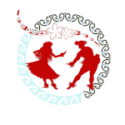In Tahitian dance (‘Ori Tahiti), Fa’ahe’e is a flowing and graceful movement that enhances the fluidity and beauty of the dance. It is often associated with smooth transitions and serves as a bridge between more dynamic movements, creating a sense of continuity and elegance.
https://www.youtube.com/watch?v=FuAaktV1oXA
Understanding Fa’ahe’e
- Translation: The word fa’ahe’e means “to slide” or “to glide” in Tahitian, which reflects the nature of the movement.
- Technique:
- The hips execute a gentle, gliding motion, often resembling a horizontal figure-eight or wave-like pattern.
- The knees remain slightly bent, providing the control and support needed for the seamless movement.
- Weight shifts subtly from one foot to the other, giving the hips their fluid and continuous motion.
- The upper body remains poised, with minimal movement to keep the focus on the hips.
Role in Tahitian Dance
- Fluidity and Elegance:
- Fa’ahe’e contributes to the overall grace of the dance, connecting sharper or faster movements with softer transitions.
- It showcases the dancer’s ability to maintain rhythm while creating a smooth, mesmerizing effect.
- Expression and Interpretation:
- This movement often symbolizes the natural flow of water, such as the waves of the ocean or the movement of a gentle breeze.
- It can evoke a sense of calm, continuity, or harmony, contrasting with the dynamic intensity of movements like fa‘arapu (rapid hip shaking).
- Versatility:
- Fa’ahe’e is used in both fast-paced ‘ōte’a dances and slower, storytelling-focused ‘aparima performances.
- It provides balance and variety, allowing the dancer to demonstrate both technical skill and artistic expression.
Training and Mastery
- Control and Precision: Dancers must develop strong core muscles and a keen sense of rhythm to perform fa’ahe’e smoothly and effectively.
- Synchronization: This movement is often synchronized with the slower beats of the drum or other musical instruments, emphasizing the dancer’s connection to the music.
- Integration: Fa’ahe’e is frequently combined with hand gestures and arm movements to enhance its visual appeal and narrative role in the performance.
Examples of Usage
- In a dance inspired by nature, fa’ahe’e might depict the gentle ebb and flow of the ocean tides.
- During a ceremonial or romantic dance, it could convey a sense of longing or tenderness.
